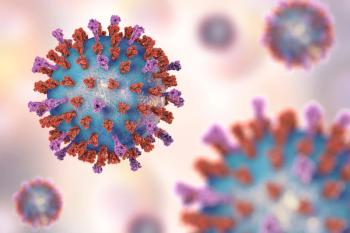
Targeting MAPK Signaling Pathway May Improve Outcomes for Certain Patients With Leukemia
By deactivating a component of the MAPK signaling pathway, researchers were able to reduce the proportion of leukemia cells in blood and bone marrow.
According to a study published in Leukemia, it may be possible to improve the therapeutic effects of Janus kinase 2 (JAK2) inhibitors by additionally blocking a specific signaling pathway. By deactivating extracellular signal-regulated kinase (ERK) 1/2, a component of the MAPK signaling pathway, the investigators were able to reduce the proportion of leukemia cells in blood and bone marrow, a result that is rarely accomplished through inhibiting JAK2 alone.
In myeloproliferative neoplasms—a form of chronic leukemia—the body produces an excess of blood cells, including erythrocytes, platelets, and granulocytes. This can result in thrombosis, enlarged spleen, weight loss, bone pain, and fatigue.
The condition is triggered by mutations that result in the JAK2 tyrosine kinase being permanently active, which results in the bone marrow receiving signals to produce new blood cells constantly. Inhibitors designed to limit the activity of JAK2 have been in use for close to a decade.
“The expectations we had for the treatment with JAK2 inhibitors have not been fully met,” said Sara Christina Meyer, MD, PhD, attending physician in Hematology at the University Hospital of Basel, in a press release. “We are addressing the question why this targeted therapy is not more effective.”
The MAPK signaling pathway, which is involved in the development of multiple cancers, is controlled by JAK2 in myeloproliferative neoplasms. The investigators used 3 different test systems to observe whether deactivating ERK1/2 as well as JAK2 would be more effective than inhibiting JAK2 alone. These included introducing recently developed ERK1/2 inhibitors to established leukemia cell cultures, mouse models for myeloid leukemia, and blood and bone marrow samples from patients.
According to the investigators, the efficacy of JAK2 inhibitor treatment was enhanced when ERK1/2 was targeted as well. They observed a reduction of spleen size in the mouse model, as well as a reduction in blood cell production across all 3 models. Further, the number of leukemia cells in the blood and bone marrow were reduced, which could alter the long-term disease course, and is rarely achieved through the use of JAK2 inhibitors alone.
Due to the apparent efficacy of this combination in early testing, the treatment is being implemented in an international phase 1/2 clinical trial, and this combination therapy is currently in use in a small number of patients. The investigators are hopeful that they will see results from this study in the coming months.
“As a clinician and researcher, my focus is clearly on improving therapies,” Meyer said in the release. “My main motivation is to find something that not only works in the dish, but can actually help people with leukemias such as myeloproliferative neoplasms.”
REFERENCE
Improving leukemia therapy with targeted treatment approaches [news release]. EurekAlert; September 16, 2021. Accessed September 16, 2021.
Newsletter
Stay informed on drug updates, treatment guidelines, and pharmacy practice trends—subscribe to Pharmacy Times for weekly clinical insights.




